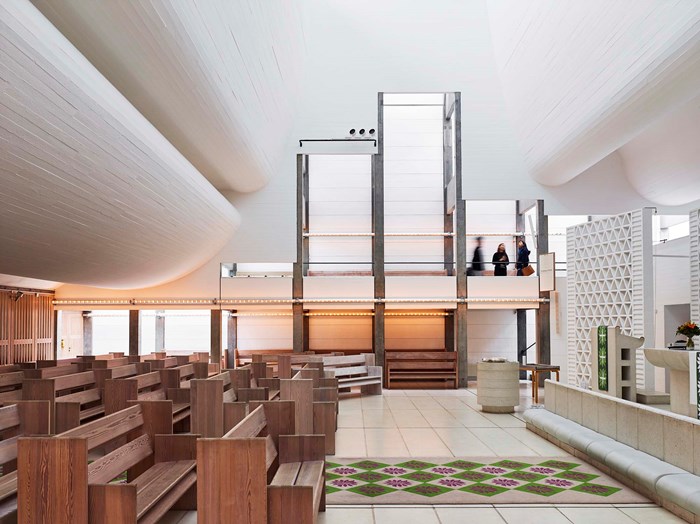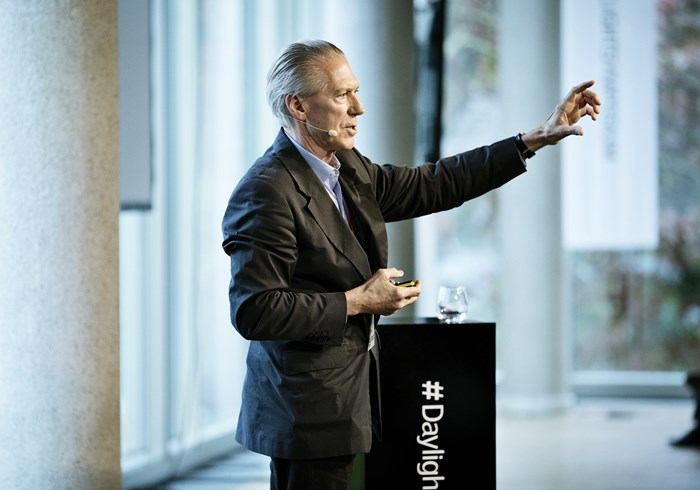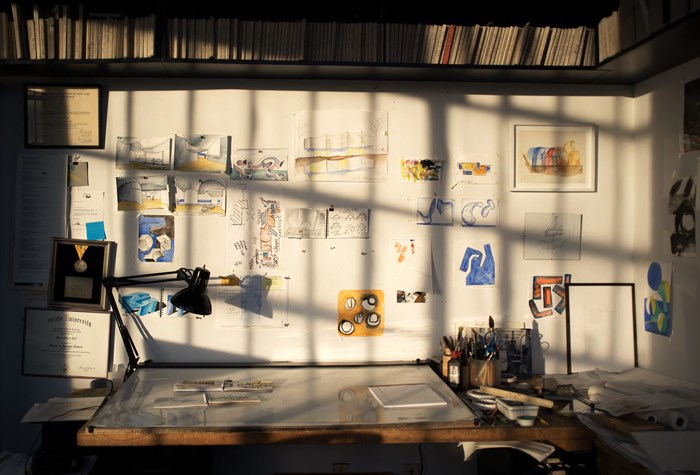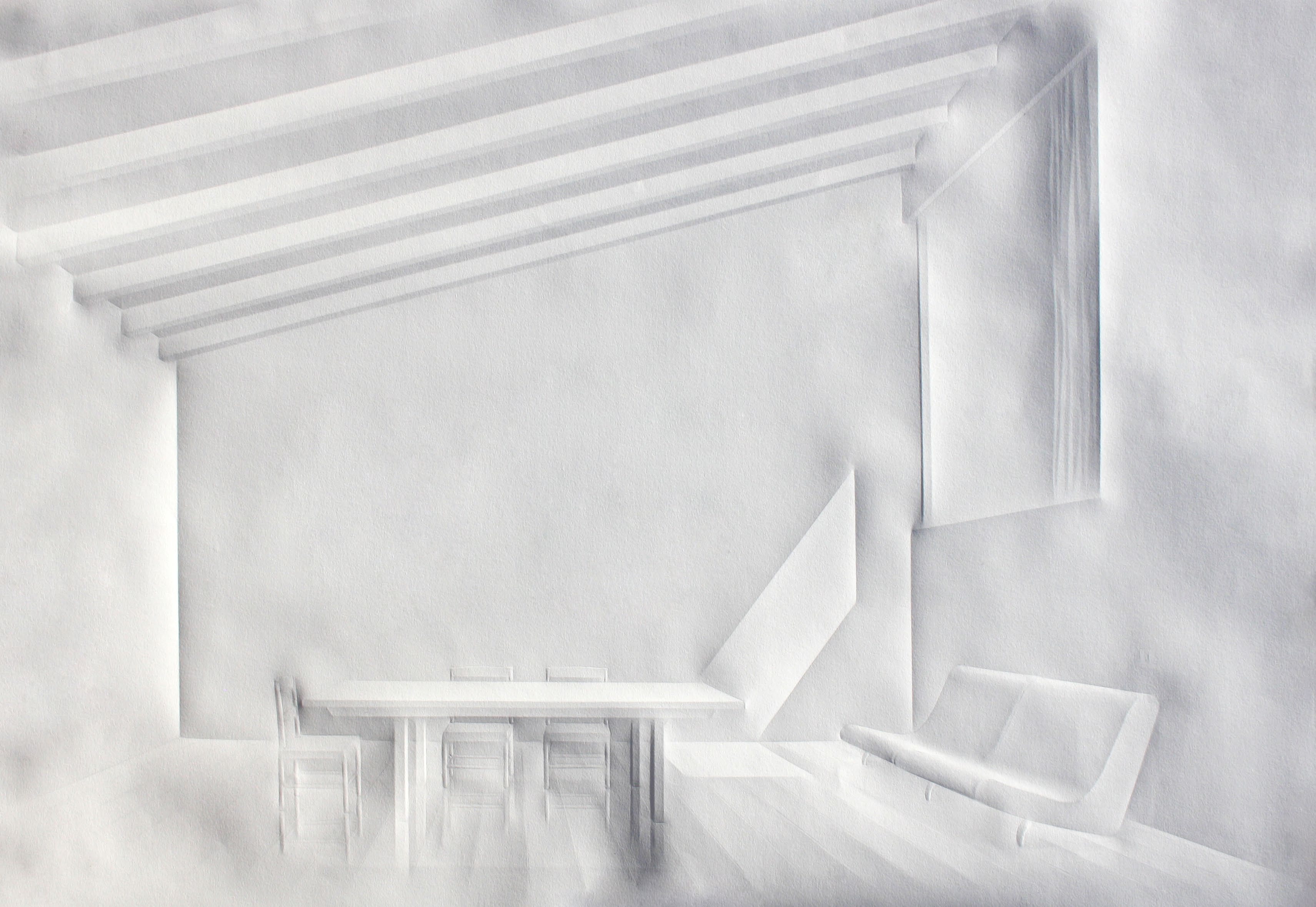
Juhani Pallasmaa reflects on the miracles that light and shadow perform in great architecture and art to enhance the lives of human beings.
Natural light plays a vital role in the symphony of our senses, is a precondition for human health, and gives us a sense of space and time. Yet, most of the time, we are unaware of its importance and take its presence for granted. Great works of art and architecture have the potential to change this. They let us experience light in all its nuances and colours, feel its interaction with material and space, and “make visible how the world touches us,”
Quote: Maurice Merleau-Ponty
Text by Juhani Pallasmaa
Images by Simon Schubert
Daylight & Architecture #26
… we were born of light. The seasons are felt through light. We only know the world as it is evoked by light, and from this comes the thought that material is spent light.
We tend to be indifferent to the most basic things in our life world, such as gravity, air, water and light, and regard them as self-evident background conditions. We usually become aware of these crucial phenomena only when we are deprived of them. Light and the cycles of the day and seasons are absolute conditions for life, yet we do not grasp the multitude of ways our existence and well-being depend on light. Usually we see light merely as a medium of vision, and architecture is also regarded as a visual art, thus neglecting its deep, existential grounding in lived reality as well as myth. Light is life − we live with light, attune ourselves to light and resonate with the conditions of illumination.
Experiencing space
The experiences of matter, space and light are inseparable. And there is no true architectural experience without light, except the limited and specific experiences of spatiality grasped in darkness through hearing, touch and smell. Even in those cases, the spatial experience usually refers to the characteristics of space acquired through vision and light. In Experiencing Architecture, Steen Eiler Rasmussen recalls the powerful acoustic percept of the underground tunnels in Vienna, the memorable setting in Carol Reed’s film The Third Man (1949): “Your ear receives the impact of both the length and the cylindrical form of the tunnel.”² Significantly, the last chapter of Rasmussen’s book is entitled “Hearing architecture”³.
We can similarly ‘hear’ the specific shapes of Romanesque cloisters and Gothic cathedrals by means of their powerful and evocative echoes. The dying notes of a Gregorian chant mark the depth and height of the cathedral, and the ascension of a fugue on the organ enhances the weave of the Baroque vaults and ornaments. In the silent darkness of the night, the echo of our footsteps on the paved streets of an old town, reflected back by the weathered walls, creates a pleasurable spatial experience and a deep sense of belonging.
The multi-sensory touch
Our senses interact − we see through our ears as much as we hear and touch through our eyes. We do not sense the world as isolated sensations, we sense it at once as a single entity. The fact that our knowledge of the senses is largely based on isolated experiments has prevented a comprehensive and embodied understanding of our world as well as of ourselves.
All sensory experiences are, fundamentally, experiences of touch; we touch with our eyes, ears, nose and tongue as much as we do with our skin. In addition to the five Aristotelian senses, we measure and touch the world with our senses of gravity, balance, movement, temporal continuum and self. We touch the world most fundamentally by our existential sense, but this basic experience is not regarded as a sense as such.⁴
All real experiences of architecture are embodied and multi-sensory. Maurice Merleau-Ponty gives this simultaneous, multi-sensory essence of experience a poetic description: “My perception is [therefore] not a sum of visual, tactile and audible givens: I perceive in a total way, with my whole being: I grasp a unique structure of the thing, a unique way of being, which speaks to all my senses at once.”⁵
Sunlight never knows how great it is until it hits the side of a building or shines inside a room.
Light and place
Every distinct space and place has its characteristic light, and light is often the quality that most directly conditions our mood. Light is the strongest conditioner of the atmosphere of place, the most comprehensive criteria of the character of space, place and setting. Just think of the joy and revitalising energy of the morning light, or the romantic but weary light of the evening, the cool light of a moonlit night, and the emotive hues of the light of sunrise and sunset. Our senses and body rhythms are attuned and calibrated to the daily and seasonal cycles of light, as with all life on this planet.
Light controls the processes and rhythms of life − even our essential hormonal activities, which also have a profound effect on our moods, activities and energy levels, depend on light. In fact, we have two separate systems that arise from light: vision and the circadian rhythms. The first locates us in space, the second coordinates our metabolic functions with time and the world. Both are equally important, but they require different quantities and qualities of light. However, our technological and utilitarian culture tends to distort our natural relationships with light. In principle, we have too little sunlight during the day and too much light at night.
One would expect the Technological Man, who is conquering the depths of the universe to know himself, but we know very little of, for example, the dizzying world of bacteria in our intestines: we have a hundred times more bacterial DNA in our bodies than human DNA.
Light and shadow
In lighting design, light is the unquestioned protagonist and we tend to forget the role of shadow. Light and its accompanying shadow give volumes, surfaces and spaces their character and expressive power, and they reveal the form, weight, hardness, texture, moistness, smoothness and temperature of material objects. The interplay of light and shadow also connects architectural spaces with the dynamics of the physical and natural worlds, seasons and the hours of the day. “What is there more mysterious than clarity? [...] What more capricious than the way in which light and shade are distributed over hours and over men,” Paul Valery asks.⁶ Natural light brings life into architecture and connects the human world with cosmic dimensions. Light is the cosmic breathing of the universe.
Light has its own atmospheres, ambiances and expressions; it is surely the most subtle and emotive of the means of architectural expression. No other medium of architecture − spatial configuration, form, geometry, proportion, colour or detail − can express equally deep and subtle extremes of emotion, ranging from melancholy to joy, grief to ecstasy, sorrow to bliss. The occasional and happy mixing of the cool light of the northern sky and the warm light of the southern sky in a single space can give rise to the experience of ecstatic happiness.
Light and shadow articulate spaces into sub-spaces and places, and their interplay gives space its character, rhythm, sense of scale and intimacy. As Constantin Brancusi notes, “Art must give suddenly. All at once, the shock of life, the sensation of breathing”⁷. In architecture this sensation of breathing is mediated by light. Light directs movement and attention, creating hierarchies and points of importance and focus. Due to its fluttering character, candlelight is especially tactile; it seems to finger objects and surfaces like a gentle massage. Candlelight creates an entire universe of intimacy. No wonder Gaston Bachelard wrote an entire book on the light of the candle.⁸
Architectural light
Light has dramatically varying characteristics in architecture, as exemplified by the singular metaphysical disc of illumination sliding across the coffered walls of the Pantheon, the immaterial foliage of form, ornamentation and light in the Baroque churches of Bavaria, the symphonic ensemble of coloured perforations through the thick south wall of Le Corbusier’s Ronchamp Chapel, and the softly embracing and therapeutic light of Alvar Aalto’s Church of the Three Crosses. The rhythmically vibrating and musical light of Juha Leiviskä’s churches feels as if Mozart himself were playing these rays of lights. His use of reflected colour adds yet another dimension of vibrating sensuality. The finest examples in architectural light turn architectural constructions into delicate instruments to play the music of light.
Contained light, liquified light
Light tends to be experientially and emotionally absent − we see the illuminated object rather than the light. Light needs to be contained by space, or concretised by the surfaces that it illuminates. “Sunlight never knows how great it is until it hits the side of a building or shines inside a room.”⁹ Through a mediating matter, such as fog, mist, smoke, rain, snow or frost, light turns into an illuminating virtual substance. The emotive impact of light is remarkably intensified when it is perceived as a substance; the liquified light feels like a moist veil on the skin and even seems to penetrate into the pores of our skin.
The paintings of J.M.W. Turner and Claude Monet exemplify this embracing atmospheric light made tangible by moisture of the air. Alvar Aalto’s daylight arrangements frequently reflect light by means of curved white surfaces. The chiaroscuro created by Aalto's rounded surfaces gives light an experiential materiality, plasticity and heightened presence. This light has a specific weight, temperature, touch and feel. This is a moulded light that feels like matter.
The narrow roof slits of Tadao Ando’s and Peter Zumthor’s buildings force light into thin directional sheets that cut through the darkness of space like immaterial veils or blades. In Luis Barragan’s Chapel for Capuchinas Sacramentarias in Mexico City, light turns into a warm, coloured liquid that even suggests sonorous qualities invoking an imaginary humming sound − the architect himself writes about “the interior placid murmur of silence”¹⁰. The lights, colours and reflections in Barragan’s Gilardi House create a true visual miracle. This architectural abstraction transcends our earthly reality; this light is an annunciation.
We have lost our sense of intimate life, and have become forced to live public lives, essentially, away from home.
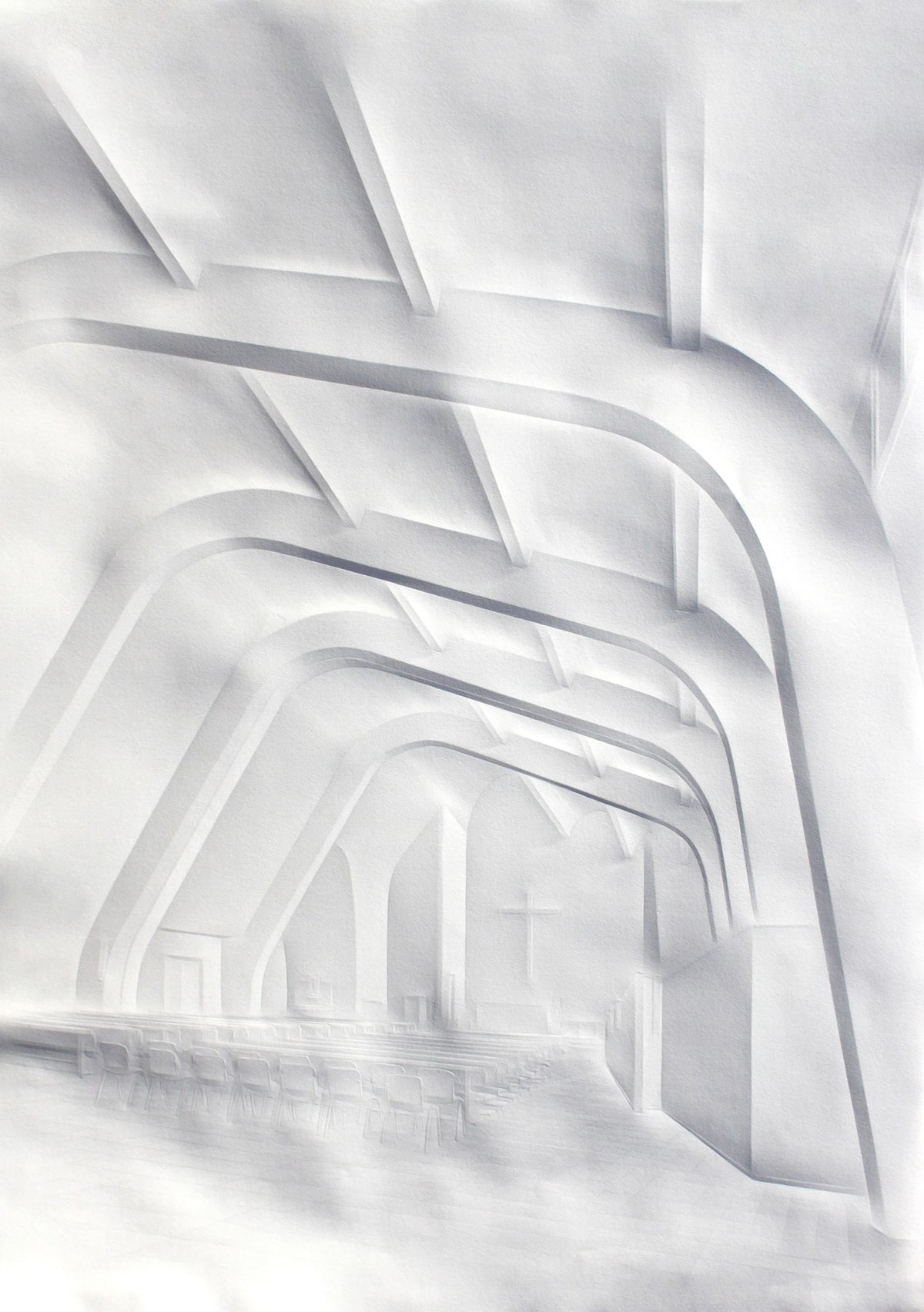
Art must give suddenly. All at once, the shock of life, the sensation of breathing.
Light and colour
Yet even more unexpected transformations, materialisations and miracles of light take place in artistic works. The coloured windows of the Matisse Chapel in Vence and many of James Turrell’s light works turn light into coloured air, invoking delicate sensations of skin contact, temperature and oscillation; these spaces make you feel like you are being submerged in a transparent, coloured substance that turns light and colour into haptic sensations. Steven Holl’s use of reflected light and colour creates the sensation of a pulsating mixture of colour and light, a condition that paradoxically heightens both the immateriality and concreteness of light. This is a caressing, breathing and healing light that connects us with the constantly changing nature of daylight and projects a cosmic ambience.
Alienating light
In today’s ordinary architectural practices, light is regrettably often treated merely as a quantitative phenomenon; design regulations and standards usually specify required minimum levels of illumination and window sizes, but they do not define maximum levels of luminance, or desired qualities of light, such as its orientation, temperature, colour or reflectedness. Besides, our buildings tend to permit too much light and distribute it too evenly, thus weakening the sense of place, intimacy and secrecy. An evenly lit, shadowless space has a nauseating and alienating effect. No wonder a powerful means of breaking the defences of self in political and criminal interrogation and torture is the use of mercilessly bright light.
Ever since the early 20th century, modernity has been obsessed with large surfaces of glass and, consequently, excessively high levels of illumination. No wonder Luis Barragan, the alchemist of modern architecture, argued that most modern buildings would be more pleasant with only half their window surface. “[T]he use of enormous plate windows ... deprives our buildings of intimacy, the effect of shadow and atmosphere. Architects all over the world have been mistaken in the proportions they have assigned to large plate windows or spaces opening to the outside ... We have lost our sense of intimate life, and have become forced to live public lives, essentially, away from home.”¹¹
In praise of shadows
The irreplaceable value of darkness and shadow is the lesson of Junichiro Tanizaki's delightful book In Praise of Shadows. The writer points out that even Japanese cooking uses shadows and that it is inseparable from darkness: “And when Yokan is served in a lacquer dish within whose dark recesses its colour is scarcely distinguishable, it is as if the darkness of the room were melting on your tongue”.¹² This is yet another sensory metamorphosis; darkness turns into taste and fragrance.
Light acquires a heightened value and emotive power in relation to shadow and darkness. In the pitch-black primordial smoke hut of the Finnish peasant, the light of a single tiny window feels like a jewel, a gracious gift presented to the inhabitant in the form of a radiant diamond of light, set on a dark matt background blackened by decades of smoke and soot. In comparison, the excessive light of a contemporary glass wall is usually a source of sensory irritation and often causes a defensive repression of vision due to the painfully excessive illumination level.
Light and whiteness are associated with health and vitality, and the modern era aspires for an abundance of light. Contrary to the prevailing modernist aspiration, the Council Chamber of Alvar Aalto’s Säynätsalo Town Hall and the ecclesiastical spaces of Sigurd Lewerentz create a soothing darkness that facilitates the experience of concentration and meditation. In both cases, darkness is emphasised by dark, rough brick surfaces that seem to absorb all reflected light. In Lewerentz’s St. Petri's Church in Klippan, the deep crack in the brick floor, with water dripping slowly from a gigantic white sea shell into the darkness of the earth, echoes and emphasises the darkness and dizzying depth of the space of the universe, the space of nothingness and eternity. The darkness in the floor is an open grave. But it is also a calming window to eternity.
Deep shadows and darkness are essential, because they dim the sharpness of vision, make depth and distance ambiguous, and invite unconscious peripheral visions and tactile fantasies. “Shadow itself is of the light,”¹³ as Frank Lloyd Wright observed. We are not normally aware of the strong haptic and embodied ingredients in our visual perceptions, but twilight reveals these forgotten sensibilities. Sight is activated and sharpened in twilight. As Turrell points out, the evolutionary process has tuned the human eye for twilight rather than bright daylight. Normal illumination levels today are so high that the full capacity of vision is suppressed as the pupil automatically closes. Paradoxically, our culture reveres vision and visibility, but at the same time it weakens the capacity of vision through the use of excessive light.
The thingness of light
Light is understood as a purely optical phenomenon, but it is also connected with haptic perception. James Turrell speaks consequently about “the thingness of light”¹⁴. “I basically make spaces that capture light and hold it for your physical sensing [...] It is [...] a realization that the eyes touch, that the eyes feel. And when the eyes are open and you allow for this sensation, touch goes out of the eyes like feel”.¹⁵ Turrell’s light works are completely based on the experiential qualities of light and the characteristics of our perceptual mechanism, but they also give rise to spatial experiences that re-orient our judgement of figure and ground, near and far, horizon and verticality. These works turn light into a substance that seems to have its own haptic qualities and sense of materiality, pressure and weight. Turrell also concretises the age of light. We tend to think of light as a phenomenon of the instant, the very definition of nowness. Yet, some of Turrell's light devices select light from the deep universe that is enormously old; he speaks appropriately of “old light”.
We inhabit simultaneously two domiciles: the physical world of matter and sensory experience on the one hand, and the mental world of mental realities, imagination, ideas and intentions on the other. These two worlds constitute a continuum, an existential singularity. In addition to its utilitarian purposes, the profound task of architecture is to “make visible how the world touches us”, as Merleau-Ponty writes of the paintings of Paul Cézanne.¹⁶ The world touches us and we touch the world, primarily through the medium of light. “Through vision, we touch the sun and the stars”.¹⁷
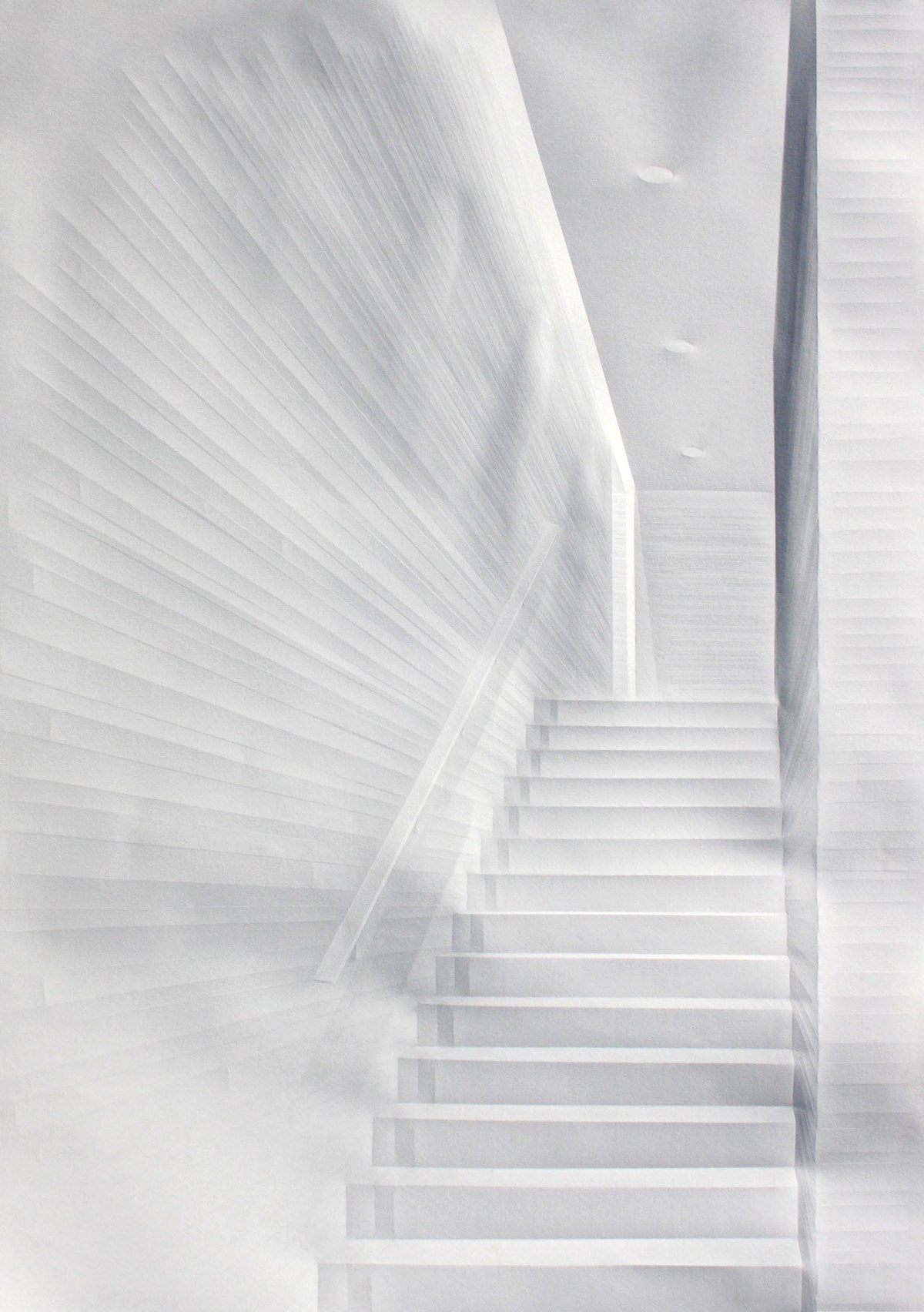
My perception is [therefore] not a sum of visual, tactile and audible givens: I perceive in a total way, with my whole being: I grasp a unique structure of the thing, a unique way of being, which speaks to all my senses at once.
The world touches us and we touch the world, primarily through the medium of light.
Juhani Pallasmaa (born 1936), architect and professor emeritus, has held positions such as Rector of the Institute of Industrial Design, Director of the Museum of Finnish Architecture, and Professor and Dean of the School of Architecture, Helsinki University of Technology. From 2008 to 2014, he was member of the Pritzker Architecture Prize Jury. Juhani Pallasmaa has published 50 books, including: The Embodied Image, The Thinking Hand, The Architecture of Image: existential space in cinema, and The Eyes of the Skin. He is an honorary member of SAFA, AIA and RIBA, Academician of the International Academy of Architecture, and has received five Honorary Doctorates.
Sources:
1. As quoted in Henry Plummer, Poetics of Light A+U Architecture and Urbanism, 1987 December, Tokyo, Extra Edition, p. 135.
2. Steen Eiler Rasmussen, Experiencing Architecture, MIT Press, Cambridge, Massachusetts, 1993.
3. Ibid., p. 225.
4. Steinerian philosophy acknowledges twelve senses, and one of them is “the life sense”. Albert Soesman, Our Twelve Senses: Wellsprings of the Soul, Hawthorn Press , Stroud, Glos, 1998.
5. Maurice Merleau-Ponty, "The Film and the New Psychology", Sense and Non-Sense, Northwestern University Press, Evanston, IL, 1964, p. 48.
6. Paul Valery, "Euphalinos, or the Architect", Dialogues, Pantheon Books, NewYork, 1956, p.107.
7. As quoted in Eric Shanes, Constantin Brancusi, Abbeville Press, New York, 1989, p. 57.
8. Gaston Bachelard, The Flame of a Candle, The Dallas Institute Publications, Dallas, Texas, 1984.
9. Louis Kahn, paraphrasing Wallace Stevens in "Harmony Between Man and Architecture", Louis I Kahn Writings, Lectures, Interviews, edited by Alessandra Latour, Rizzoli International Publications, New York, 1991, p. 343.
10. Louis Barragan, Official address, 1980 Pritzker Architectural Prize. Reprinted in Barragan: The Complete Works. Raul Rispa, ed., Thames and Hudson, London, 1995, p. 205.
11. Alejandro Ramirez Ugarte, “Interview with Luis Barragan” (1962) in Enrique X de Anda Alanis, Luis Barragan: Classico del Silencio, Collección Somosur, Bogota, 1989, p. 242.
12. Jun’ichiro Tanizaki, In Praise of Shadows, Leete’s Island Books, New Haven, Connecticut, 1977, p. 16.
13. As quoted in Robert McCarter, Frank Lloyd Wright: A Primer on Architectural Principles, Princeton Architectural Press, New York, 1991, p. 284.
14. James Turrell, The Thingness of Light. Scott Poole, ed., Architecture Edition, Blacksburg, Virginia, 2000, pp. 1,2.
15. Ibid., pp. 1,2.
16. Maurice Merleau-Ponty, “Cezanne's Doubt” in Sense and Non-Sense, p.19.
17. As quoted in David Michael Levin, Modernity and the Hegemony of Vision, University of California Press, Berkeley and Los Angeles, 1993, p.
